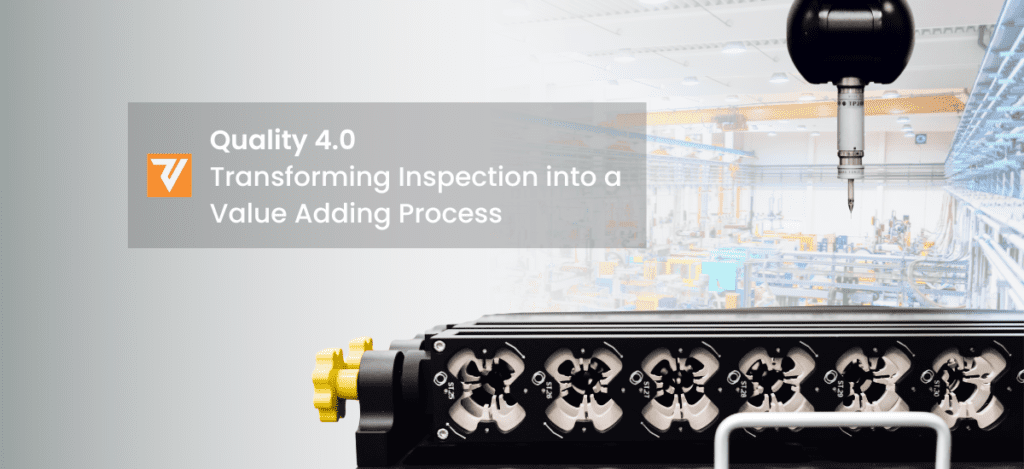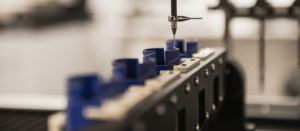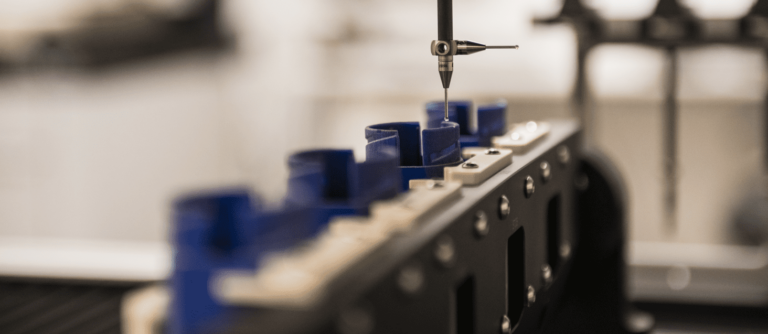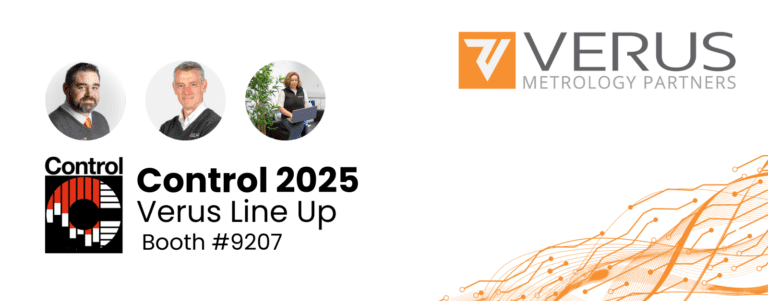
We are in the Industry 4.0 era, where the concept of digital transformation is being applied to the manufacturing sector. One of the problems, however, is that quality functions are often left out of Industry 4.0 planning. This is a problem as quality and manufacturing are intrinsically linked, so delays, bottlenecks, or broken data chains in quality will impact manufacturing. That’s even before you look at the value adding potential of including quality in your Industry 4.0 planning.
So, where does quality, metrology, and inspection fit into Industry 4.0, and how can inspection be turned into a value adding process in the medical device industry?
We are going to explore these questions while getting beyond the jargon and buzzwords to get straight to the real-world applications of Industry 4.0 and Quality 4.0. Let’s dive in, starting with a recap of Industry 4.0.
What is Industry 4.0?
With high-level responsibility for medical device production facilities, Industry 4.0 has probably been somewhere on your agenda for several years now. To understand Quality 4.0, it’s important to first look at Industry 4.0 and how quality, inspection, and measurement processes fit in.
Here are some of the key principles and/or outputs of Industry 4.0 technologies, solutions, processes, and best practices:
- Manual processes are automated with robots and other automated manufacturing technologies, as well as through advanced software solutions.
- Machines and systems are more integrated vertically and horizontally within the organisation, and outside the organisation with supply chain partners
- More data is produced with increased integration and connectivity, leading to data-driven decision-making, whether automated, semi-automated, or manual
- Better collection and use of data means processes across the production line and vertically into other areas of the business can be further enhanced through machine learning technologies
The result of the above is enhanced oversight of manufacturing lines that are running faster, more efficiently, and more autonomously.
How Does Quality 4.0 Fit in With Industry 4.0?
Almost all companies in the medical device industry are on an Industry 4.0 journey where they are evolving into smart factories based on Industry 4.0 technologies and solutions. In other words, it is a process that is happening over time.
As these changes in medical device manufacturing are taking place, it is imperative that quality functions keep pace, including metrology and inspection.
One of the issues is that traditional go/no-go methods of inspection and measurement are typically detached from production lines as they take place in metrology labs and rooms. Traditional inspection methods also often have substantially manual processes, making them slow and prone to human error.
The reality is that a go/no-go approach to inspection and measurement doesn’t fit with the objectives and business realities of Industry 4.0, where the aim is to digitally transform production lines through automation, integration, and better use of data. By maintaining a go/no-go approach to metrology and quality, it becomes considerably more difficult for production lines to fully optimise. Without fully optimised production lines along Industry 4.0 principles, the ability to digitalise business models becomes limited.
Therefore, quality, metrology, and inspection processes must evolve alongside:
- The Industry 4.0 initiatives of production lines
- The digital transformation progress of the wider business
What Quality 4.0 Looks Like in the MedTech Industry
Increased Automation
A crucial component of Quality 4.0 is increased levels of automation in metrology and inspection processes. The aim is to minimise the number of steps required to inspect a product, particularly the steps that require an operator. The ideal scenario is to reduce operator steps to zero.
The benefits that come from automated metrology processes include:
- Accelerated inspection.Automation significantly accelerates inspection and measurement compared to manual workflows and processes
- Error elimination. Human error can be reduced to as low as zero with automation solutions
- Optimised resources. Rather than quality staff working on manual and repetitive tasks, resources can be reallocated to tasks that are value-adding
Continuous Real-Time Inspection
Another key component of Quality 4.0 is the moving of metrology, measurement, and inspection processes from testing rooms to the production line. In other words, moving from offline inspection to in-line inspection.
This real-time approach to inspection and measurement not only improves the efficiency of metrology processes, but the efficiency of production lines.
Better Use of Data
Automated metrology and inspection solutions produce data at each stage of the measurement process. With the right integrations in place, that data can be transferred to a variety of management systems for a range of reasons, including:
- Inspection and measurement process improvement
- Quality optimisation in both quality and production workflows
- Automated detection of anomalies such as deviation from normal tolerance levels that indicate an upcoming failure. This information enables quality teams to take action before the failure occurs, maintaining production line productivity and OEE, while also reducing waste.
- Enhanced product traceability for regulatory and business purposes
Why Does Quality 4.0 Need to Become a Priority for Medical Device Manufacturing Facilities?
Quality 4.0 is about making the quality function of your operation value-adding. This means improving and automating inspection workflows to not only keep up with faster and more efficient production processes but also enhance them.
For example, with a Quality 4.0 approach to metrology, it is possible to identify errors in components before they occur, provide valuable quality data for R&D teams, or improve supply chain stability and efficiency.
The traditional go/no-go approach to quality in manufacturing, on the other hand, is often restricted to determining whether a part is good or bad. As a result, it can be described as a box-ticking exercise that happens near the end of the production process. That is not to undermine the importance of inspection and measurement, but the traditional approach means it is a function that has a level of detachment from the rest of the production line. This limits integration and maintains inefficient silos.
An Example of the Importance of the Quality 4.0 Approach to Metrology
Take making quality improvements in the manufacturing process as an example. Metrology and inspection processes produce vast amounts of data, but that data is often siloed and/or disjointed. This makes it almost impossible to use that data to make data-driven decisions on manufacturing process quality improvements.
Quality 4.0 is about turning scenarios like this around. In this example, it would mean having integrated systems so all data points can be stored and processed before being presented in meaningful dashboards to analysts and decision-makers.
The Path to Quality 4.0 in Medical Device Manufacturing Facilities
All Quality 4.0 projects and initiatives should be aligned with production strategies and business objectives. Furthermore, there should be clearly defined objectives and timelines to achieve a return on investment.
To a great extent, the technology already exists to achieve a Quality 4.0 approach to inspection and measurement.
However, even though the technology exists, the overriding priority must always be that accuracy, repeatability, and processing quality are maintained within required tolerances.
The important thing to remember is that drastic changes in quality and inspection processes are rarely, if ever, the best approach. Moving towards Quality 4.0 should be a gradual journey, although the time to start is now.
Specific Considerations and Challenges in the Medical Device Industry
There are unique inspection challenges to overcome with Quality 4.0 in the medical device industry. Here are some examples:
- The complexity of continuous real-time inspection of intricate components that continue to reduce in size.
- The nature of the materials used in medical device manufacturing, especially polymers. Traditionally, medical device products and components manufactured with polymers are left to cool before being inspected. Allowing for the temperature differential in an in-line inspection solution is a critical consideration.
- Developing repeatable, real-time inspection solutions on medical device production lines where batch sizes are becoming increasingly smaller. With the increasing trend for personalised healthcare, the trend for batch sizes as low as one will become more widespread. The impact this will have on Quality 4.0-related metrology solutions will need careful consideration.
While Quality 4.0 Comes with Challenges, Moving Too Slowly Has Risks Too
There are tried and tested technologies that currently exist that can already effectively deal with many of the challenges that exist, including those highlighted above.
Even though these technologies exist, the medical device industry is traditionally risk adverse. This is understandable given the regulatory framework that must be adhered to. It’s even more understandable when you consider the industry’s commitment to patient safety, where comprising on quality is not acceptable.
However, technologies and metrology best practices have advanced considerably. Regulators also continue to refine what is possible. For example, achieving compliance through the inspection of a golden sample rather than the annual calibration of a CMM machine. This change alone opens up a range of possibilities for faster, more automated, and more accurate measurement processes.
While being cautious is an understandable trait in the industry, there are risks from moving too slowly.
Moving too slowly with Quality 4.0 technologies and solutions results in a widening of the gap between the capabilities of a production line and the capabilities of quality processes.
This risk of a widening gap between production and quality is heightened in the medical device industry. This is because the go/no-go approach to inspection, where inspection is detached from production lines and batches either pass or fail, has a greater impact in highly regulated manufacturing environments where there are complex parts being produced on high-speed lines.
Therefore, new approaches, processes, and technologies in metrology and inspection should be embraced as you move towards Quality 4.0.
Conclusion: Turning Inspection into a Value-Adding Process with Quality 4.0
The move towards Industry 4.0 production processes is continuing in the medical device industry, so quality functions need to not only keep up but contribute to process improvement. The importance of this is two-fold.
Firstly, it ensures there is no gap in capabilities between production and quality processes. This helps to achieve overall production goals in relation to throughput, productivity, and efficiency.
Secondly, upgrading measurement and inspection processes along Quality 4.0 lines turns quality into a value-adding function. It is this value-adding element that will deliver substantial and long-term returns on investment. Business leaders across all sectors and industries recognise the importance of digital transformation and, in manufacturing, the opportunities presented by Industry 4.0. The benefits of Quality 4.0 mean it should also be high on the list of priorities.







